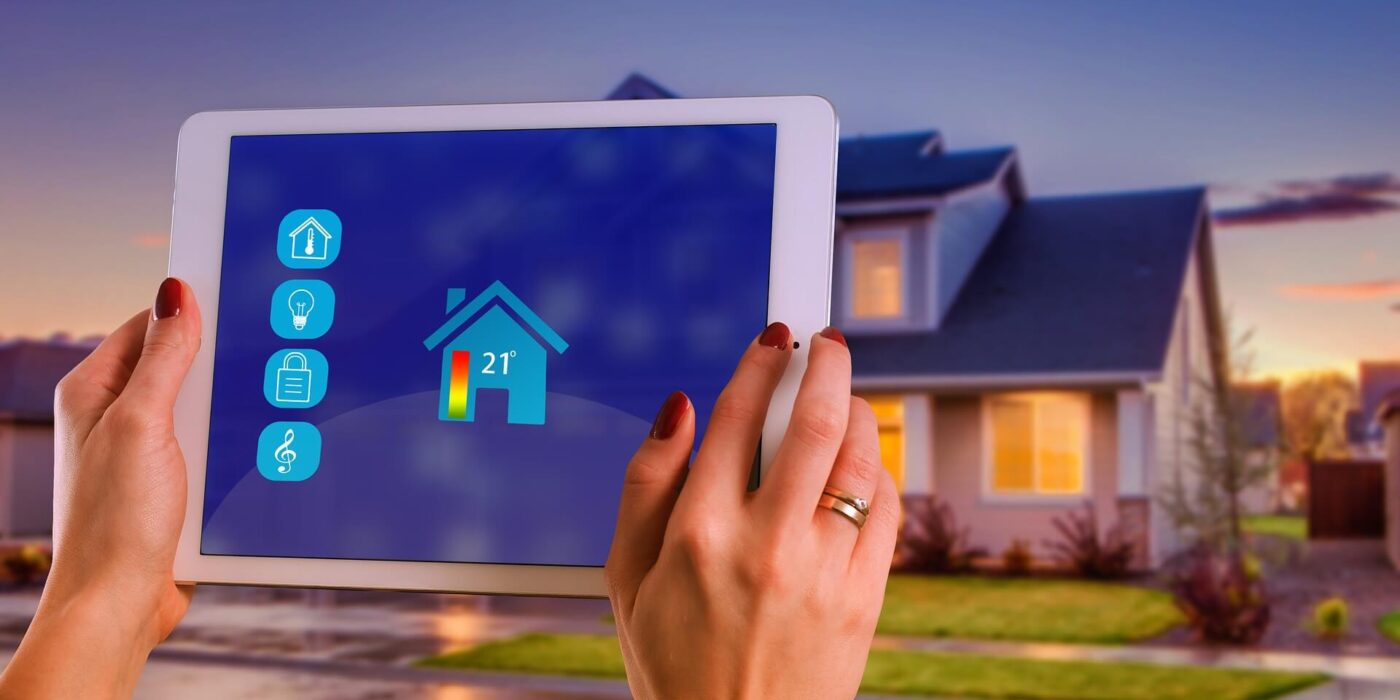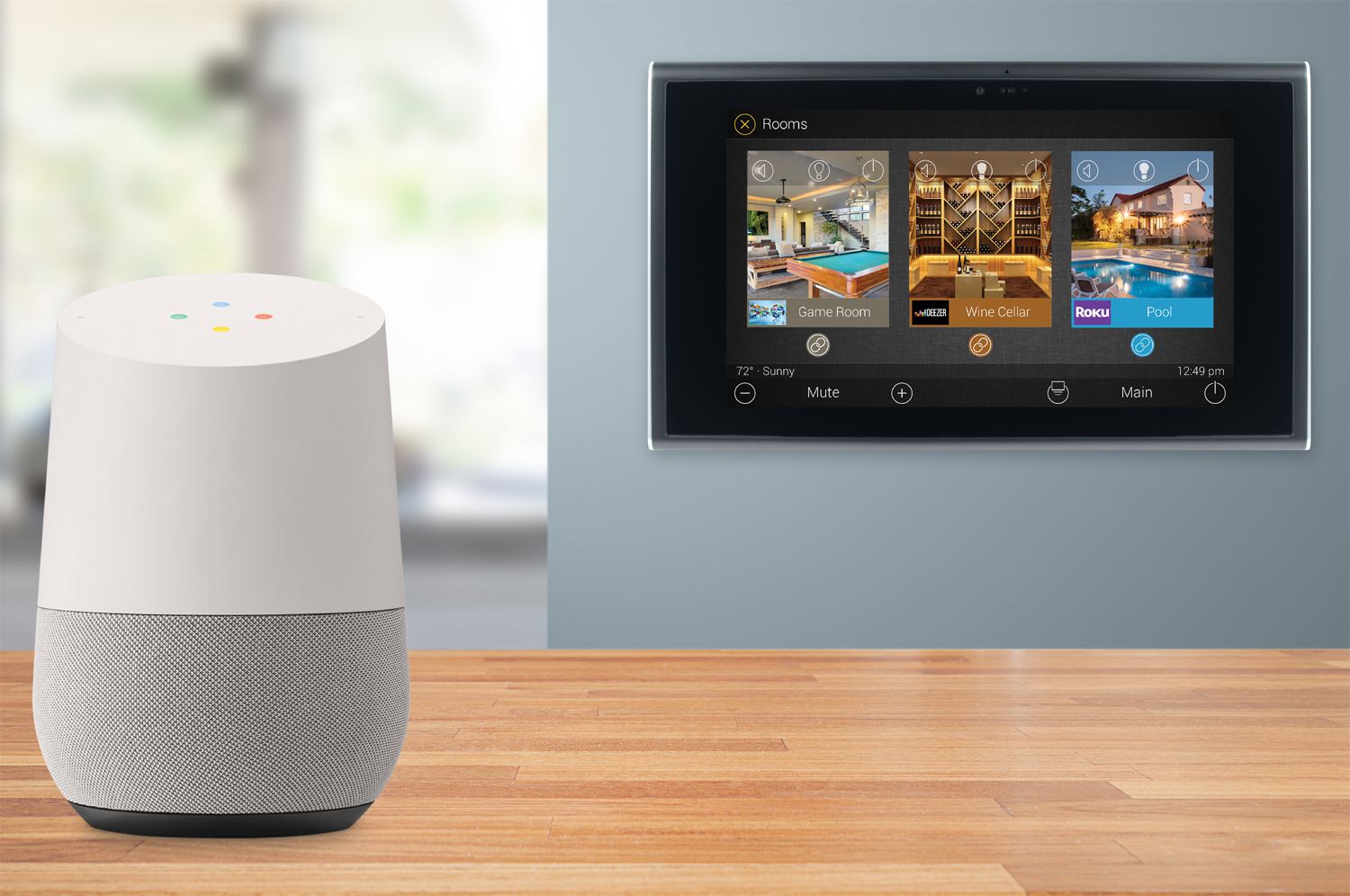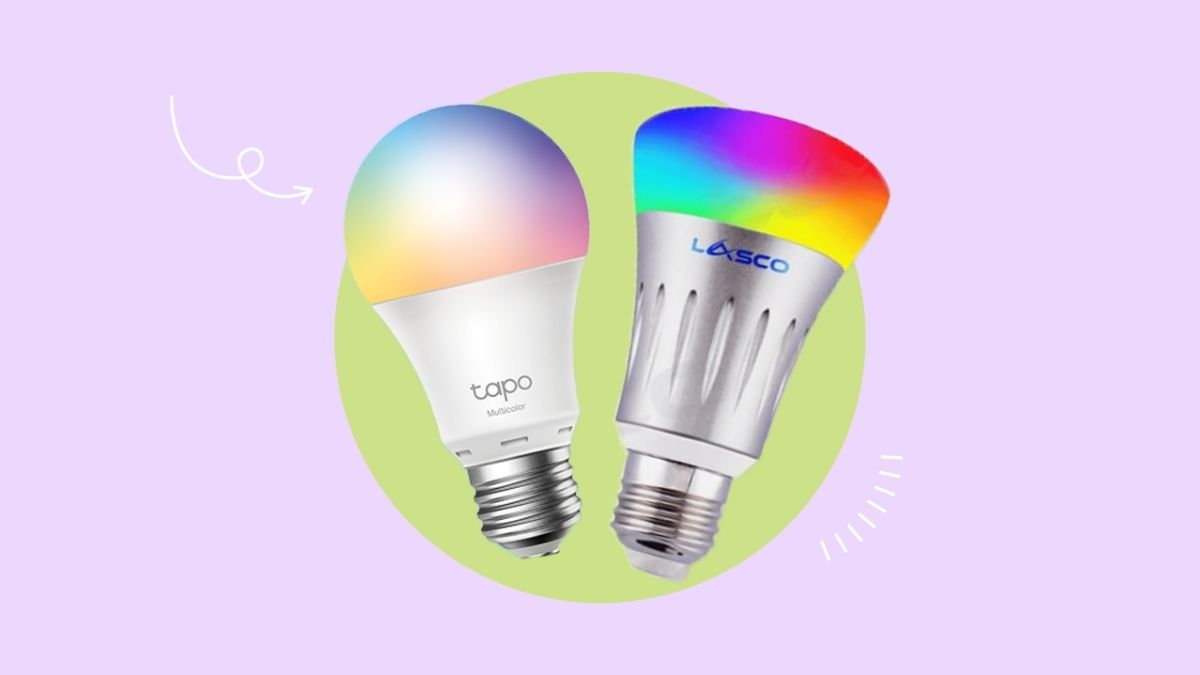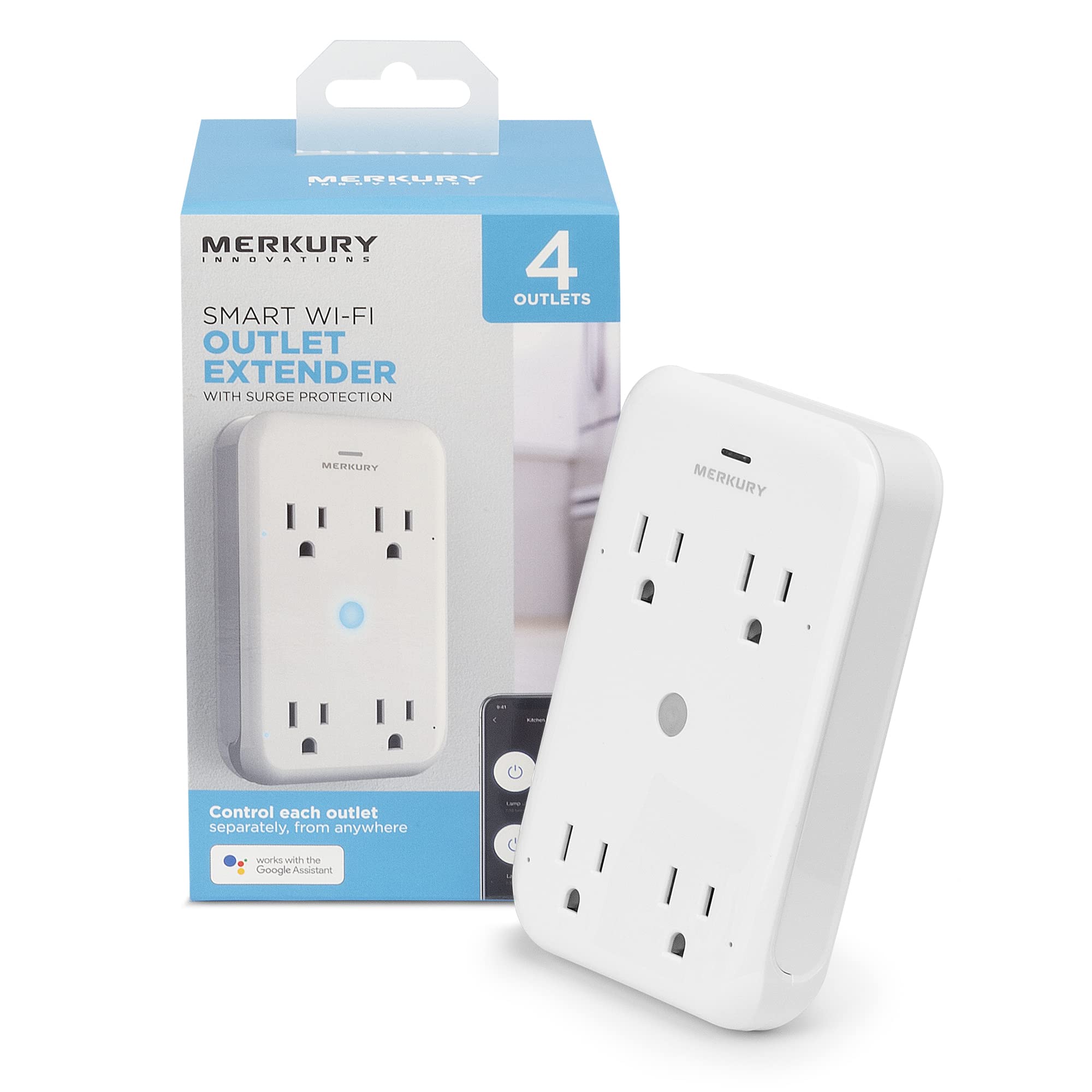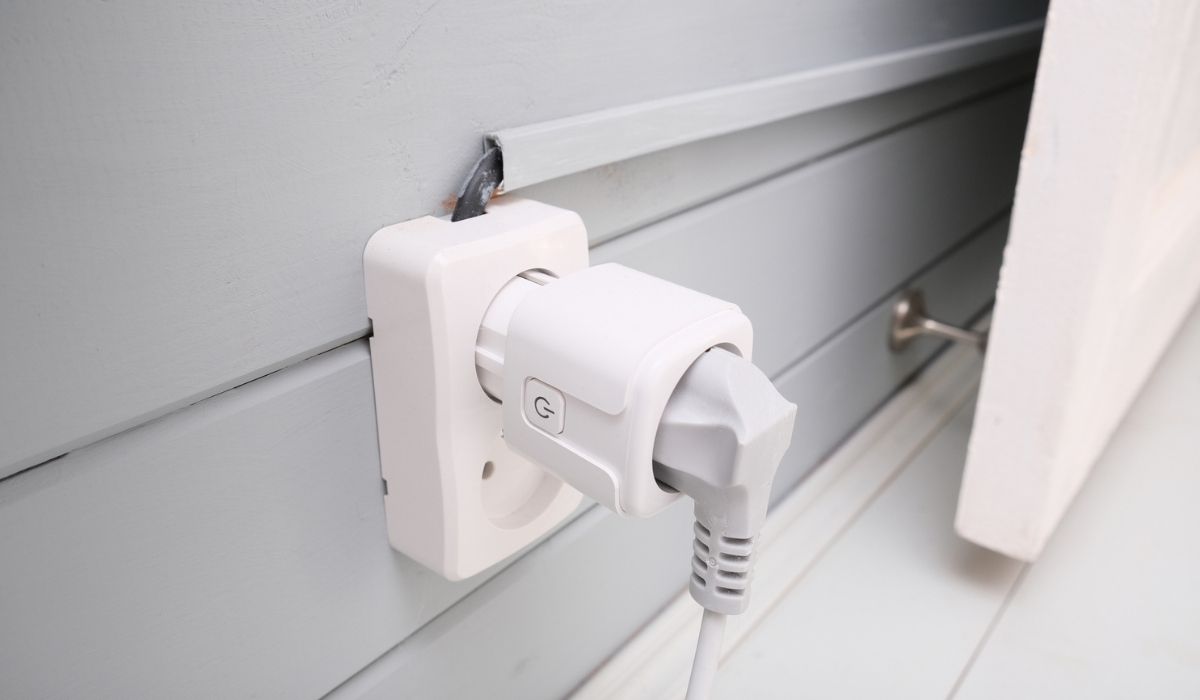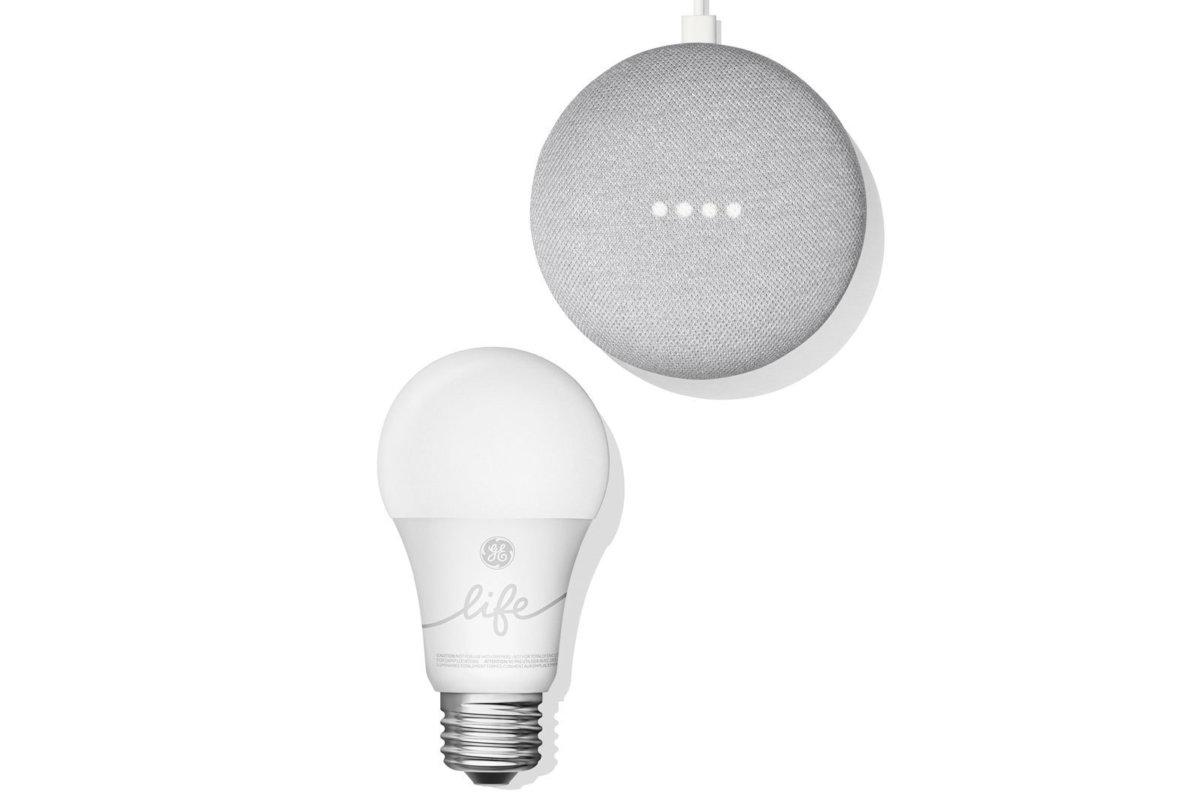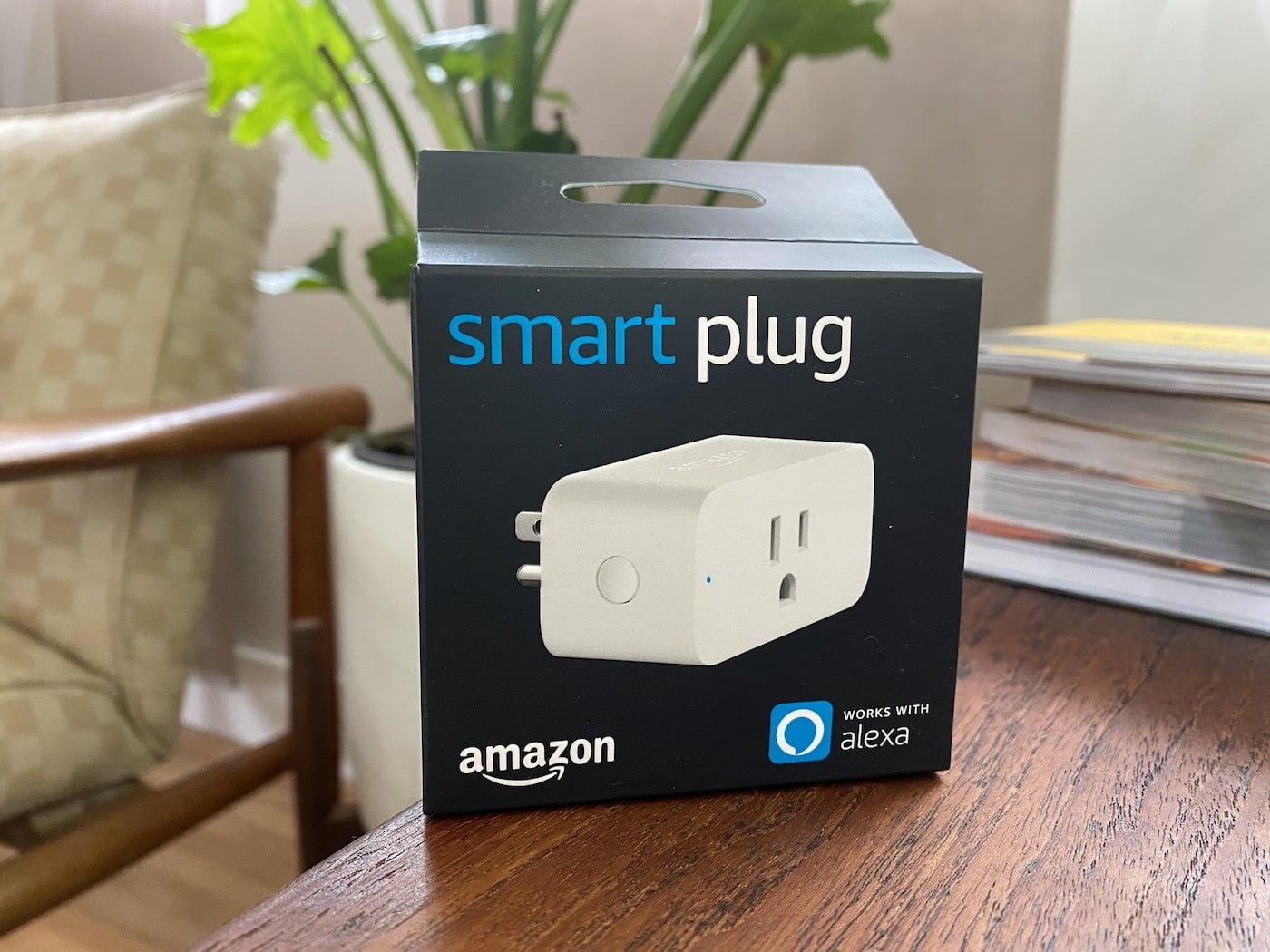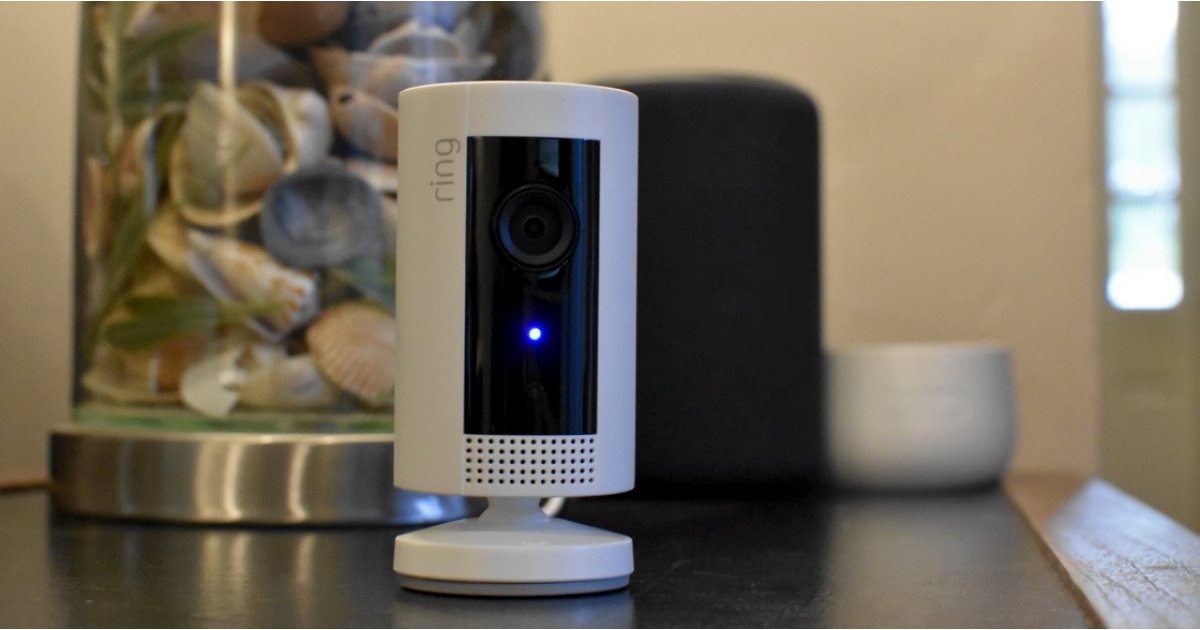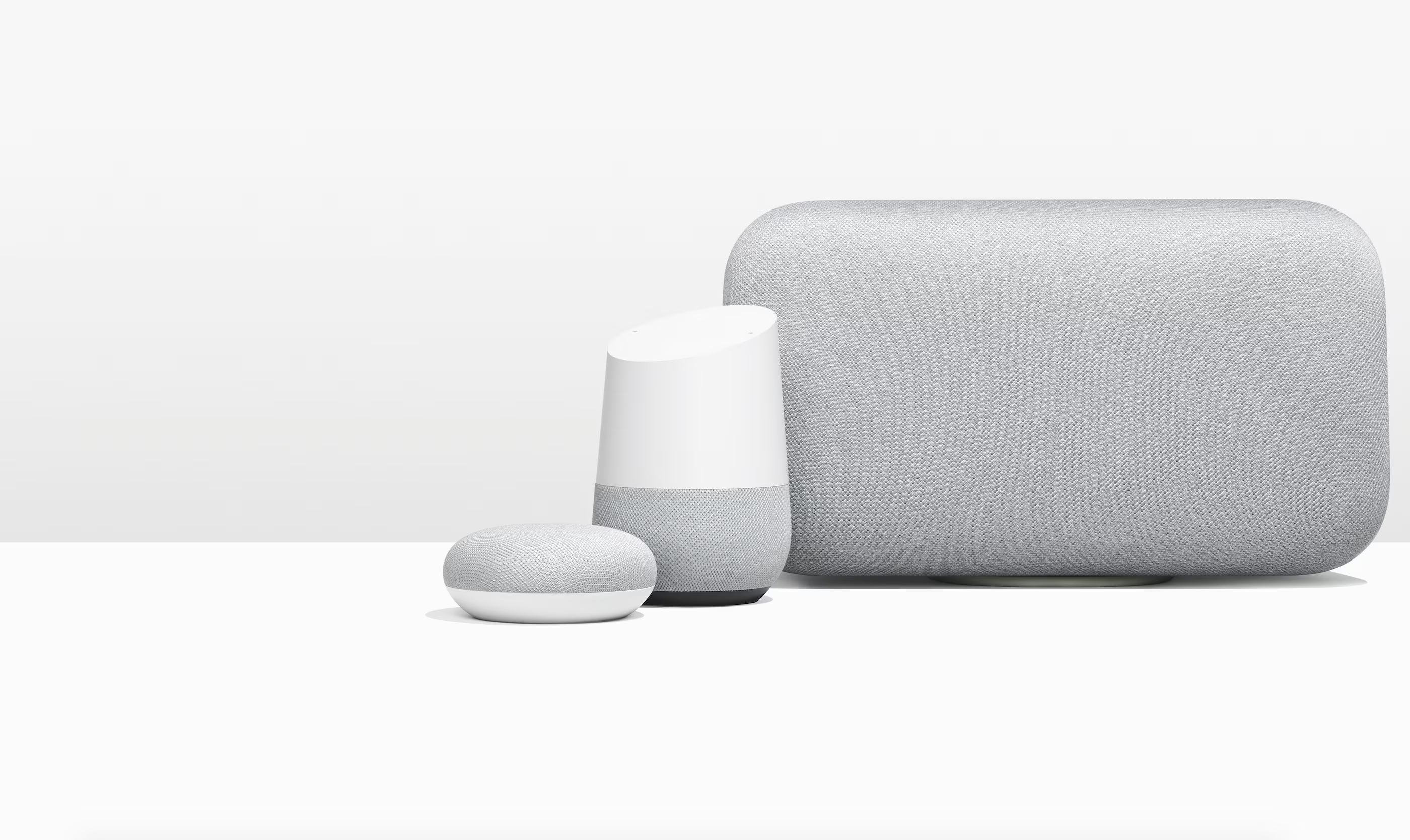Introduction
Welcome to the future where technology has made its way into every aspect of our lives – even our homes. The concept of a “smart home” has become increasingly popular in recent years, promising a more convenient, efficient, and secure living environment. But what exactly is a smart home, and how can you turn your humble abode into one?
A smart home refers to a residence equipped with various internet-connected devices and systems that can be remotely controlled and automated. These devices, often referred to as the Internet of Things (IoT), communicate with each other and can be controlled through a central hub or smartphone app. From adjusting the thermostat temperature to unlocking the front door with a simple voice command, a smart home offers unparalleled convenience and control.
But the benefits of a smart home go beyond just convenience. With the right gadgets and systems in place, you can enhance the safety, energy efficiency, and entertainment capabilities of your home. Imagine being able to monitor your house 24/7, reduce your energy consumption, and create the perfect ambiance with just a few taps on your smartphone. These are just a few of the many advantages a smart home can offer.
In this article, we will explore the different components that make up a smart home and how you can incorporate them into your own living space. Whether you are looking to dip your toes into the world of home automation or you want to take your existing smart home to the next level, this guide will provide you with the knowledge and insights you need.
So, if you are ready to transform your home into a futuristic haven where technology and convenience mesh seamlessly, let’s dive into the exciting world of smart homes.
What is a Smart Home?
A smart home is more than just a house fitted with smart devices; it is a living space where technology and connectivity converge to enhance daily living. In a smart home, various devices and systems are interconnected and can be controlled through a central hub or smartphone, enabling homeowners to automate and remotely manage a wide range of functions. These devices, known as the Internet of Things (IoT), communicate with each other and the homeowner to create a seamless and integrated living environment.
The heart of a smart home lies in its ability to automate routine tasks and provide convenient control over various aspects of daily life. From adjusting the lighting and temperature to managing security cameras and unlocking doors, a smart home offers unparalleled convenience and customization. Imagine being able to set the perfect ambiance for movie night with a simple voice command, or having your home adapt to your needs and preferences automatically.
While the concept of a smart home may seem complex, the basic principle is simple: it is all about leveraging technology to create a more efficient, comfortable, and secure living space. By integrating devices and systems, a smart home can streamline daily tasks, reduce energy consumption, improve safety, and enhance entertainment options.
Central to the functioning of a smart home is the use of smart devices and systems that can be controlled remotely and automated for greater efficiency. These devices can include smart thermostats, lighting systems, security cameras, appliances, entertainment systems, and more. The connectivity between these devices allows for seamless communication and coordination, enabling homeowners to customize and optimize their living space to their liking.
Furthermore, the rise of voice control assistants has made smart homes even more accessible and user-friendly. With voice-enabled devices like Amazon Echo or Google Home, users can simply speak commands to control their smart devices, making it even easier to interact with their smart homes.
Overall, a smart home is all about harnessing the power of technology to create a living space that is convenient, efficient, and tailored to your needs. It offers a wide range of benefits, from increased comfort and convenience to improved energy efficiency and security. With the right devices and systems in place, you can transform your house into a truly smart home.
Benefits of a Smart Home
The adoption of smart home technology has numerous benefits that can greatly enhance the way we live. From convenience and comfort to energy efficiency and security, a smart home offers a range of advantages that make it an appealing option for homeowners. Let’s explore some of the key benefits of turning your home into a smart home:
- Convenience: One of the major advantages of a smart home is the convenience it provides. With smart devices and systems in place, you can control various aspects of your home with a few taps on your smartphone or a simple voice command. Whether you want to turn off the lights, adjust the thermostat, or lock the doors, a smart home allows you to do it all from the palm of your hand.
- Energy Efficiency: Smart homes are designed to be energy-efficient, helping you reduce your energy consumption and save on utility bills. With smart thermostats, you can easily regulate the temperature in your home, adjusting it based on your preferences or when no one is present. Smart lighting systems allow you to automate and control the lights, ensuring they are only on when needed. By optimizing your energy usage, you can create a more sustainable living environment.
- Security: Safety is a top priority for homeowners, and a smart home can provide peace of mind when it comes to security. With smart security systems, you can monitor your home from anywhere at any time, receive alerts about potential threats, and even remotely control locks and cameras. Whether you’re at work, on vacation, or just in another room, you can keep a close eye on your home and ensure its safety.
- Comfort: Smart homes are all about enhancing your comfort. With automated systems, you can set the ideal temperature, adjust the lighting, and even control your entertainment systems to create the perfect ambiance. Imagine waking up to a warm and cozy home, dimming the lights for a movie night, or having your favorite songs playing throughout the house – all with just a few simple commands.
- Safety: In addition to security, a smart home can offer enhanced safety features. For example, smart smoke detectors can instantly alert you and emergency services in case of a fire, while smart carbon monoxide detectors can protect against this silent killer. Smart leak sensors can detect water leaks and prevent potential water damage. By integrating these safety devices, you can have peace of mind knowing that your home is monitored and protected.
These are just a few of the many benefits a smart home can offer. From the convenience and comfort of controlling your home with a smartphone to the energy savings and increased security, transforming your home into a smart home can significantly improve your quality of life. So why not embrace the future and experience the advantages that smart home technology has to offer?
Assessing Your Home’s Current Technology
Before diving into the world of smart homes, it’s essential to assess your home’s current technology and infrastructure. Understanding your existing setup will help you determine what areas can be upgraded or integrated with smart devices. Here are a few steps to assess your home’s technology:
- Take inventory of your devices: Start by making a list of all the devices and systems in your home that are connected to the internet. This includes smartphones, tablets, computers, smart TVs, gaming consoles, and any other devices that can connect to the internet.
- Assess your wireless network: A strong and reliable Wi-Fi network is crucial for a smart home. Check the range and coverage of your existing wireless router to ensure it can reach all areas of your home without dead spots. If needed, consider investing in a more powerful router or Wi-Fi extenders to improve coverage.
- Review your home’s infrastructure: Take a look at the wiring, electrical setup, and available outlets in your home. Some smart home devices may require specific connections or power sources, so it’s essential to ensure that your home’s infrastructure can support them.
- Evaluate existing smart devices: If you already have some smart devices in your home, assess their compatibility and connectivity. Check if they can integrate with other smart devices or platforms, and if they can be controlled through a central hub or smartphone app.
- Consider future developments: It’s essential to consider how you envision your smart home evolving in the future. Assess your long-term goals and see if your current technology and infrastructure align with those plans. This will help you make informed decisions when selecting new smart devices.
By conducting a thorough assessment of your home’s current technology, you’ll have a clearer understanding of what areas need improvement or upgrading to fully embrace the smart home concept. This analysis will also help you determine the compatibility of your existing devices with the new smart devices you may want to incorporate in the future.
Remember, transforming your home into a smart home is a progressive process. It’s not necessary to upgrade everything at once. Start by identifying the areas where smart technology can bring the most value and gradually expand from there. With a well-thought-out plan, you can create a smart home that meets your needs and preferences while complementing your existing technology infrastructure.
Smart Home Hubs and Controllers
A crucial component of a smart home is a central hub or controller that acts as the brain, allowing you to manage and control all the connected devices in your home. Smart home hubs and controllers serve as the command center, enabling seamless communication between various devices and creating a cohesive smart home experience. Here’s everything you need to know about smart home hubs and controllers:
What are Smart Home Hubs?
Smart home hubs are devices that serve as the central control point for all your smart devices. These hubs typically connect to your home’s Wi-Fi network and communicate with your smart devices through different wireless protocols such as Zigbee or Z-Wave. With a smart home hub, you can manage and control multiple smart devices from different manufacturers using a single interface, whether it’s a smartphone app, voice command, or a dedicated control panel.
The Functions of Smart Home Hubs:
Smart home hubs offer several functions that make managing and controlling your smart devices more efficient:
- Device Integration: Hubs allow for the integration of different devices and protocols, making it possible to control and automate various aspects of your smart home with a single interface.
- Automation: Hubs enable the creation of automation and routines, allowing you to set up custom actions and scenarios for your smart devices. For example, you can create a routine that turns off all lights and locks the doors when you leave the house.
- Remote Access: Many smart home hubs offer remote access capabilities, allowing you to control your smart devices even when you’re away from home. This means you can monitor security cameras, adjust the thermostat, or turn on the lights while you’re on vacation or at work.
- Voice Control: Smart home hubs often integrate with voice control assistants like Amazon Alexa or Google Assistant, allowing you to control your smart devices using voice commands. This hands-free control adds another layer of convenience to your smart home experience.
Choosing a Smart Home Hub:
When selecting a smart home hub, consider compatibility with your existing devices, ease of use, and the range of features offered. Some popular smart home hub options include Amazon Echo Plus, Samsung SmartThings, Google Nest Hub, and Apple HomePod. Research each option to determine which one best suits your needs and integrates well with the devices you already own.
Alternatives to Smart Home Hubs:
In addition to dedicated smart home hubs, some smart devices can function as standalone controllers. For instance, smart speakers like Amazon Echo or Google Nest devices have built-in hub capabilities, allowing you to control compatible devices directly through them. This can be a cost-effective and convenient alternative if you have a smaller number of smart devices and don’t require advanced automation and integration features.
Smart home hubs and controllers play a crucial role in managing and controlling the various devices that make up your smart home. With the right hub in place, you can streamline the management and automation of your smart devices, creating a more cohesive and user-friendly smart home experience.
Voice Control Assistants
Voice control assistants have transformed the way we interact with our smart devices and are a key component of any modern smart home. These intelligent virtual assistants, powered by artificial intelligence, allow you to control your smart home devices using simple voice commands. From turning on the lights to playing your favorite music, voice control assistants offer a hands-free and convenient way to manage your smart home. Here’s everything you need to know about voice control assistants:
Popular Voice Control Assistants:
There are several popular voice control assistants available today, each with its strengths and capabilities. Some of the most well-known options include:
- Amazon Alexa: Alexa, the voice control assistant behind Amazon Echo devices, is known for its vast library of skills and compatibility with numerous smart home devices. Using the “Alexa” wake word, you can control lights, thermostats, locks, and other smart devices through voice commands.
- Google Assistant: Google Assistant is the voice control assistant found on Google Home and Nest devices. With Google Assistant, you can control smart devices, ask questions, play music, and even receive personalized recommendations based on your preferences.
- Apple Siri: Siri is the voice control assistant built into Apple devices like the iPhone, iPad, and HomePod. Siri allows you to control HomeKit-compatible devices with natural language commands, as well as perform other tasks like sending messages or setting reminders.
Controlling Your Smart Home with Voice Commands:
Voice control assistants make it incredibly easy to interact with your smart home devices. Through a simple voice command, you can control a wide range of smart devices, such as:
- Lighting: “Turn on the lights in the living room.”
- Thermostats: “Set the temperature to 72 degrees.”
- Entertainment Systems: “Play my ‘Relaxation’ playlist on Spotify.”
- Security Cameras: “Show me the front door camera.”
- Locks: “Lock the front door.”
Voice control assistants can also complete more complex tasks by integrating with other smart home devices and services. For example, you can create routines or scenes that trigger multiple actions with a single command. You can set up a “Goodnight” routine that turns off the lights, adjusts the thermostat, and locks the doors simply by saying, “Alexa, goodnight.”
Privacy and Security Considerations:
While voice control assistants offer great convenience, it’s important to be mindful of privacy and security. These assistants are always listening for the wake word or command, which means they can potentially record and store your voice commands. Familiarize yourself with the privacy settings and features offered by your chosen voice control assistant to ensure your data is protected.
Expanding Voice Control Abilities:
As technology continues to evolve, voice control assistants are becoming more advanced and capable. They can now integrate with a wide variety of third-party apps, services, and devices, expanding their functionality beyond simple smart home control. Keep an eye out for updates and new features from your voice control assistant, as they may enhance your smart home experience even further.
Voice control assistants offer a convenient and intuitive way to interact with your smart home devices. Whether you prefer Amazon Alexa, Google Assistant, or Apple Siri, integrating a voice control assistant into your smart home setup can add a new level of convenience and automation to your daily life.
Home Security Systems
When it comes to creating a smart home, ensuring the safety and security of your living space is a top priority. Home security systems play a vital role in protecting your home from intruders, monitoring for potential threats, and providing peace of mind. In a smart home setup, these systems can be seamlessly integrated with other smart devices to create a comprehensive security solution. Let’s explore the key components and benefits of a smart home security system:
Components of a Smart Home Security System:
A smart home security system typically consists of the following components:
- Security Cameras: These cameras are strategically placed around the perimeter of your home and can capture clear video footage. They can be accessed remotely, allowing you to monitor your property in real-time and receive alerts on your smartphone when motion is detected.
- Door and Window Sensors: These sensors are placed on doors and windows and alert you if they are opened or tampered with. They provide an extra layer of security and can trigger an alarm if an unauthorized entry is detected.
- Motion Sensors: Motion sensors detect movement in specific areas of your home and can be used to trigger lights, security cameras, or alarm systems. They help detect and deter potential intruders.
- Smart Locks: Smart locks allow you to control and monitor access to your home remotely. You can lock or unlock your doors using a smartphone app, assign temporary access codes to guests, and receive notifications when someone enters or exits your home.
- Alarm Systems: Alarm systems are an integral part of a smart home security setup. They can sound a loud alarm and send notifications to your smartphone when a breach is detected, acting as a deterrent and alerting you and authorities of potential threats.
Benefits of a Smart Home Security System:
There are several benefits to integrating a smart home security system into your home:
- Remote Monitoring: With a smart home security system, you can keep tabs on your home from anywhere in the world. Access live video feeds, receive alerts, and control your security devices using a smartphone app.
- Enhanced Deterrence: Visible security cameras and alarm systems act as deterrents, preventing potential intruders from targeting your home. The knowledge that their actions are being recorded and alerted can significantly reduce the likelihood of break-ins.
- Secure Access: Smart locks provide an added layer of security by allowing you to control access to your home remotely. You can grant temporary access codes to family members, service providers, or guests, and even receive notifications when doors are locked or unlocked.
- Integration with Other Devices: Smart home security systems can be seamlessly integrated with other smart devices in your home. For example, you can set up automation routines that turn on lights and activate security cameras when the system is armed, simulating an occupied home.
- Peace of Mind: Perhaps the most significant benefit of a smart home security system is the peace of mind it provides. Knowing that your home is protected and being able to monitor it remotely can alleviate worries and allow you to feel secure.
Investing in a smart home security system is a proactive step towards protecting your home and loved ones. By integrating security cameras, sensors, alarm systems, and smart locks, you can create a comprehensive security solution that offers convenience, peace of mind, and increased safety for your smart home.
Smart Thermostats and Climate Control
Smart thermostats are revolutionizing the way we control and manage the climate in our homes. These intelligent devices give you unprecedented control over your heating, ventilation, and air conditioning (HVAC) systems, providing comfort and energy efficiency. By leveraging technology and automation, smart thermostats offer a range of benefits for your smart home’s climate control. Let’s explore how smart thermostats can enhance your home’s temperature management:
What are Smart Thermostats?
A smart thermostat is a device that connects to your HVAC system and allows you to control and manage the temperature of your home in a more intelligent and convenient way. Unlike traditional thermostats, smart thermostats offer advanced features, integration with other smart devices, and remote control capabilities.
Key Features and Benefits:
Smart thermostats provide a host of features that help optimize your home’s climate control:
- Remote Control: With a smart thermostat, you can control your home’s temperature remotely using a smartphone app. This allows you to adjust the temperature while you’re away or even before you arrive home, ensuring a comfortable environment whenever you need it.
- Learning Capabilities: Many smart thermostats have learning algorithms that analyze your behavior and preferences to create personalized temperature schedules. Over time, the thermostat learns your patterns and adjusts the temperature accordingly, optimizing comfort and energy savings.
- Energy Efficiency: Smart thermostats help reduce energy waste by allowing you to set schedules and automate temperature adjustments. You can program the thermostat to lower the temperature when you’re away or asleep, and raise it when you’re typically at home. This helps save energy and reduce utility bills.
- Integration with Other Devices: Smart thermostats can integrate with other smart devices, such as smart lighting or occupancy sensors, to further optimize energy efficiency. They can use data from these devices to make intelligent temperature adjustments based on occupancy and natural light levels.
- Compatibility with Voice Control: Many smart thermostats can be controlled through popular voice control assistants like Amazon Alexa or Google Assistant. You can change the temperature, adjust settings, and even set up temperature routines using simple voice commands.
Choosing the Right Smart Thermostat:
When selecting a smart thermostat, consider factors such as compatibility with your HVAC system, ease of installation, and the features that matter most to you. Popular smart thermostat options include Nest Thermostat, Ecobee, and Honeywell Lyric. Research each option to determine which one aligns with your needs and integrates well with other smart devices in your home.
Embracing Intelligent Climate Control:
Smart thermostats are a pivotal element of any smart home setup, offering convenience, energy savings, and personalized comfort. With remote control capabilities, learning algorithms, and integration with other smart devices, these devices play a key role in optimizing your home’s climate control. Embrace the benefits of smart thermostats and transform your home into a place of perfect temperature and energy efficiency.
Energy Monitoring and Management
With the ever-increasing need for energy conservation and efficiency, smart homes offer an innovative solution. Energy monitoring and management systems allow homeowners to track and optimize their energy usage, leading to reduced consumption and lower utility bills. By harnessing the power of technology, these systems provide valuable insights and tools to help you make informed decisions about your energy usage. Let’s explore how energy monitoring and management can benefit your smart home:
What is Energy Monitoring and Management?
Energy monitoring and management systems provide real-time data and analytics regarding your home’s energy consumption. These systems often include smart meters, energy monitoring devices, and dedicated apps or software that give you a comprehensive view of your energy usage patterns. By tracking and analyzing energy data, you can identify areas of inefficiency and make adjustments to conserve energy.
Key Features and Benefits:
Energy monitoring and management systems offer several key features that help you optimize energy usage:
- Real-time Energy Monitoring: Energy monitoring systems provide up-to-date information on your home’s energy consumption. You can view your energy usage in real-time, allowing you to identify energy-consuming devices and take immediate action to reduce consumption.
- Historical Data and Analytics: These systems collect and analyze historical energy usage data, giving you insights into long-term consumption trends. By identifying patterns and understanding peak usage times, you can make informed decisions about adjusting your energy usage habits.
- Smart Notifications and Alerts: Energy monitoring systems can send notifications and alerts to your smartphone or email to keep you informed about abnormal energy usage or potential energy-saving opportunities. This allows you to take proactive measures to optimize your energy consumption.
- Energy Efficiency Recommendations: Some energy monitoring systems offer personalized recommendations on how to improve energy efficiency. These recommendations may include adjusting thermostat settings, upgrading to energy-efficient appliances, or implementing energy-saving routines and automation.
- Integration with Smart Devices: Energy monitoring systems can integrate with other smart devices in your home, such as smart thermostats, lighting systems, and appliances. This integration allows you to automatically adjust energy-consuming devices based on real-time energy data and optimize energy efficiency.
Choosing an Energy Monitoring System:
When selecting an energy monitoring system, consider factors such as compatibility with your energy provider, ease of installation, and functionality. Some popular options include Sense Energy Monitor, Neurio Home Energy Monitor, and Smappee. Research each system to determine which one aligns with your needs and integrates well with other smart devices in your home.
Embracing Energy Efficiency:
Energy monitoring and management systems empower homeowners to take control of their energy usage and reduce their environmental footprint. By providing real-time data, historical analytics, and personalized recommendations, these systems enable you to make informed decisions about your energy consumption. Embrace the benefits of energy monitoring and management, and transform your smart home into an energy-efficient haven.
Lighting Control and Automation
Lighting control and automation is a fundamental aspect of creating a smart home. With advanced lighting systems and automation technology, you can effortlessly control and customize your home’s lighting to suit your preferences, enhance your lifestyle, and improve energy efficiency. Let’s explore the benefits and features of lighting control and automation:
What is Lighting Control and Automation?
Lighting control and automation involve the ability to control and manage the lighting in your home through intelligent systems and devices. These systems offer various features such as remote control, scheduling, dimming, and integration with other smart devices for seamless automation.
Benefits of Lighting Control and Automation:
Lighting control and automation provide numerous benefits, shaping the ambiance and functionality of your home:
- Convenience: With lighting automation, you can control your home’s lighting from anywhere using a smartphone app. This allows you to turn lights on or off, adjust brightness, and create lighting scenes effortlessly. No more walking around the house to manually control each light.
- Energy Efficiency: Lighting automation can improve energy efficiency by enabling you to set schedules and automatically turn off lights when not in use. Motion sensors can also be integrated to detect occupancy and automatically turn lights on or off, ensuring lights are only used when needed.
- Personalization and Ambiance: Lighting control systems offer the ability to create custom lighting scenes that suit your mood or activity. You can dim the lights for movie nights, set a warm ambiance for dinner parties, or simulate natural daylight in the morning to wake up gently.
- Integration with Other Devices: Lighting automation systems can seamlessly integrate with other smart devices, such as smart thermostats or voice control assistants. This integration allows for coordinated actions where, for example, lights automatically adjust when the thermostat changes or respond to voice commands given to a smart assistant.
- Enhanced Security: Lighting automation can be used for security purposes. By setting up lighting schedules or using motion sensors, you can create the illusion of an occupied home even when you’re away, deterring potential intruders.
Types of Lighting Control:
There are multiple ways to control and automate your lighting:
- Smart Lighting Systems: These systems consist of smart LED bulbs or smart light switches that can be controlled wirelessly. They often connect to a hub or smartphone app, allowing you to control individual lights or groups of lights and create custom lighting scenes.
- Lighting Automation: Lighting automation uses motion sensors or occupancy sensors to automatically turn lights on or off based on movement in the room. This ensures that lights are only activated when needed, resulting in energy savings.
- Voice Control: Many smart lighting systems can be integrated with voice control assistants like Amazon Alexa or Google Assistant. This allows you to control your lights using simple voice commands, providing an effortless and hands-free lighting experience.
- Smartphone Apps: Lighting control apps give you complete control over your lighting from your smartphone. Through these apps, you can adjust brightness, set schedules, create lighting scenes, and even remotely control your lights when you’re away from home.
Choosing the Right Lighting Control System:
When selecting a lighting control system, consider factors such as compatibility with your existing light fixtures, ease of use, and the desired level of automation. Popular options include Philips Hue, Lutron Caseta, and WiZ Connected. Research each system to find one that suits your needs and integrates well with other smart devices in your home.
Elevating Your Home’s Lighting Experience:
Lighting control and automation offer a new level of convenience, energy efficiency, and personalization to your smart home. Whether it’s creating the perfect ambiance for different activities, enhancing security, or optimizing energy usage, lighting control and automation technology can transform the way you experience and interact with lighting in your home.
Smart Appliances and Kitchen Gadgets
The kitchen is the heart of the home, and with smart appliances and kitchen gadgets, it can become the epitome of convenience and efficiency. Smart technology has revolutionized the way we cook, clean, and manage our kitchen tasks. From intelligent appliances to innovative gadgets, the possibilities are endless. Let’s explore the benefits and features of smart appliances and kitchen gadgets for your smart home:
Benefits of Smart Appliances and Kitchen Gadgets:
Smart appliances and kitchen gadgets offer a range of benefits that can transform your cooking and kitchen experience:
- Convenience and Time-saving: Smart appliances can automate various kitchen tasks, making your life easier and saving you valuable time. From smart ovens and microwaves that can be preheated remotely to coffee makers that can have your brew ready as you wake up, smart technology streamlines your daily routine.
- Energy Efficiency: Many smart appliances are designed with energy-saving features, helping you reduce your environmental impact and lower energy bills. For example, smart refrigerators optimize temperature settings based on usage patterns, while smart dishwashers offer energy-efficient wash cycles.
- Remote Control and Monitoring: With smart appliances, you can control and monitor your kitchen tasks remotely. Preheat the oven on your way home from work, check the status of your dishwasher while running errands, or receive alerts when your refrigerator needs restocking – all from the convenience of your smartphone.
- Integration with Voice Control: Many smart appliances and kitchen gadgets can be integrated with popular voice control assistants like Amazon Alexa or Google Assistant. This allows for hands-free control and the ability to operate devices with simple voice commands.
- Enhanced Functionality: Smart appliances often come equipped with additional features and technologies that enhance their functionality. For instance, smart refrigerators can suggest recipes based on ingredients you have, while smart ovens can automatically adjust cooking time and temperature for optimal results.
Examples of Smart Appliances and Kitchen Gadgets:
The market is brimming with innovative and intelligent smart appliances and kitchen gadgets. Here are a few popular examples:
- Smart Refrigerators: These refrigerators come with built-in screens or smartphone apps that allow you to see what’s inside your fridge, create shopping lists, and get expiration date notifications. Some models even have cameras inside that let you check your inventory remotely.
- Smart Ovens: Smart ovens offer advanced features such as remote preheating, temperature control, and recipe suggestions. They can be controlled through smartphone apps, voice commands, or even AI assistants.
- Smart Dishwashers: These dishwashers can be scheduled to run during off-peak energy hours or operated remotely via smartphone apps. Some models also have features that allow for precise water and detergent usage, optimizing cleaning efficiency.
- Smart Coffee Machines: From coffee makers that can be programmed to automatically brew your favorite cup of joe at a specific time to those that can be controlled by voice command, smart coffee machines add convenience and luxury to your morning routine.
- Smart Sous Vide Cookers: Sous vide cookers ensure precise temperature control for cooking proteins, vegetables, and more. With smart technology, you can monitor the cooking process remotely and receive notifications when the food is ready.
Choosing the Right Smart Appliances and Gadgets:
When selecting smart appliances and kitchen gadgets, consider factors such as compatibility with your existing kitchen setup, desired features, and budget. Research different models and brands to ensure they integrate well with your other smart devices and align with your specific needs and preferences.
Embrace the Future of Kitchen Technology:
Smart appliances and kitchen gadgets inspire a new level of convenience and efficiency in the heart of your home. Embrace the benefits of smart technology and transform your kitchen into a space that simplifies daily tasks, optimizes energy usage, and enhances your overall cooking experience.
Entertainment and Multimedia Systems
A smart home is not complete without an exceptional entertainment and multimedia experience. Smart technology has revolutionized the way we consume and enjoy entertainment in our homes. From advanced audio systems to immersive video experiences, smart entertainment systems provide endless possibilities for enhancing your home’s entertainment capabilities. Let’s explore the benefits and features of entertainment and multimedia systems in your smart home:
Benefits of Entertainment and Multimedia Systems:
Entertainment and multimedia systems offer several benefits that can transform your home into a personal entertainment hub:
- Immersive Audio: Smart audio systems provide high-quality audio and immersive sound experiences. Whether it’s a multi-room audio setup, surround sound system, or wireless speakers, smart audio technology enhances your music, TV shows, and movies with crystal-clear sound.
- Streaming and Content Accessibility: Smart entertainment systems enable seamless streaming of your favorite music, movies, and TV shows. Popular streaming services like Netflix, Spotify, and Amazon Prime Video can be accessed directly from your smart TV or connected devices, eliminating the need for additional equipment.
- Integration with Voice Control: Many entertainment and multimedia systems can be integrated with popular voice control assistants like Amazon Alexa or Google Assistant. This allows for hands-free control of your entertainment devices, enabling you to play music, adjust volume, and even search for content using simple voice commands.
- Home Theater Experience: Transform your living room into a home theater with smart technology. From smart projectors and screens to automated lighting and motorized shades, these systems offer a cinematic experience right in the comfort of your home.
- Smart TVs and Video Content: Smart TVs enable access to a wide range of video content and streaming services without the need for external devices. They often come equipped with built-in apps, voice control capabilities, and advanced features like high dynamic range (HDR) or 4K resolution.
Features and Devices:
There are various devices and features that contribute to an exceptional entertainment and multimedia experience:
- Smart TVs: These televisions are equipped with internet connectivity, built-in apps, and streaming capabilities. They offer access to a variety of online content and can be controlled using a smartphone app or voice control.
- Smart Speakers: These speakers not only provide exceptional audio quality but also serve as hub devices for voice control and smart home automation. They can be used to play music, provide weather updates, answer questions, and more.
- Streaming Devices: Streaming devices like Apple TV, Roku, or Chromecast enable easy access to streaming services and online content. Simply connect the device to your TV or A/V receiver, and you can enjoy a wide array of entertainment options.
- Home Theater Systems: These systems typically consist of a combination of speakers, a receiver, and possibly a projector or large display. They provide a surround sound experience and immerse you in the action of movies, sports, and games.
Create Your Ultimate Entertainment Space:
Enhancing your entertainment and multimedia systems with smart technology allows you to create an immersive and personalized experience in your smart home. From streaming your favorite music and movies to transforming your living room into a home theater, these systems offer endless possibilities for enjoyment and relaxation.
Home Automation and Integration
Home automation and integration form the backbone of a smart home, providing seamless control and coordination of various devices and systems. Through automation and integration, you can create a truly connected and efficient living space where technology works in harmony to simplify your daily tasks and enhance your quality of life. Let’s delve into the benefits and features of home automation and integration in your smart home:
Benefits of Home Automation and Integration:
Home automation and integration offer numerous benefits that can transform your home into a smarter and more efficient living environment:
- Convenience: Home automation allows you to control multiple devices and systems with ease. With the touch of a button or a simple voice command, you can adjust lighting, regulate temperature, manage security, and control entertainment devices.
- Efficiency and Energy Savings: Automation enables you to create energy-efficient routines and schedules. For example, you can automate lighting to turn off when a room is unoccupied or have your smart thermostat adjust temperature settings based on occupancy patterns, ultimately reducing energy consumption.
- Safety and Security: Integrating security systems, smart locks, and surveillance cameras creates a comprehensive home security solution. You can receive real-time alerts, monitor your home remotely, and automate security routines to simulate occupancy when you’re away.
- Flexibility and Customization: Home automation allows you to customize and tailor your smart home experience according to your preferences. You can create personalized scenes and routines to suit different activities or moods, making your home truly unique.
- Integration of Devices: Home automation systems bridge the gap between different smart devices, brands, and technologies. They enable seamless integration, allowing your devices and systems to work together to perform coordinated actions and enhance overall functionality.
Features and Integration:
Several smart home platforms and protocols enable the integration and automation of devices:
- Smart Hubs and Controllers: Smart home hubs act as central control points, allowing you to manage and control multiple devices through a single interface. They help integrate devices from various brands and protocols, providing a unified smart home experience.
- Voice Control Assistants: Voice control assistants like Amazon Alexa, Google Assistant, and Apple Siri play a crucial role in home automation, providing voice-based control and integration for a wide range of devices.
- Smartphone Apps and Cloud Services: Many smart devices come with dedicated smartphone apps that allow you to control and monitor them remotely. Cloud services enable data sharing and remote access, enhancing the overall integration and control of your smart home.
- Internet of Things (IoT) Protocols: IoT protocols like Zigbee and Z-Wave enable wireless communication between smart devices, facilitating seamless integration and control. These protocols ensure that devices from different manufacturers can work together in a cohesive ecosystem.
Designing Your Smart Home Automation:
Designing your smart home automation involves identifying the devices and systems you want to automate and ensuring they are compatible with your chosen smart home platform or hub. Consider the routines, schedules, and scenes you want to create to enhance your lifestyle and streamline your daily activities.
Experience the Power of Automation:
Home automation and integration give you the power to control and coordinate your smart devices and systems effortlessly. By automating routine tasks and integrating your devices, you can create a connected home that enhances convenience, comfort, energy efficiency, and security.
Conclusion
As technology continues to advance, the concept of a smart home has become increasingly accessible and appealing. From convenience and comfort to energy efficiency and enhanced security, the benefits of turning your home into a smart home are undeniable.
By incorporating smart devices, automation, and integration, you can create a living space that seamlessly blends technology with daily life. You can control your home’s lighting, climate, security, and entertainment systems with a simple voice command or a tap on your smartphone. Home automation allows you to create personalized routines and scenes that fit your lifestyle, while integration ensures that all your smart devices work together harmoniously.
From smart thermostats and energy monitoring systems to entertainment and multimedia setups, the possibilities for creating a smart home are vast. With the ability to remotely monitor and control your home’s various systems, you can enjoy peace of mind whether you’re at work, on vacation, or simply in another room.
Transitioning to a smart home is a progressive process, and it’s important to assess your home’s current technology and prioritize the areas that can benefit most from automation and smart devices. Whether you start with a single device or embark on a complete smart home makeover, the key is to choose devices that are compatible with each other and can be easily integrated into your existing setup.
As you embrace the world of smart homes, you’ll discover new levels of convenience, efficiency, and customization. Your home will adapt to your needs, creating a comfortable and tailored environment for you and your family.
So, dive into the possibilities, explore the technologies, and embark on the journey of transforming your home into a smart home. Experience the benefits of improved convenience, energy efficiency, security, and entertainment that await you in the exciting world of smart homes.







